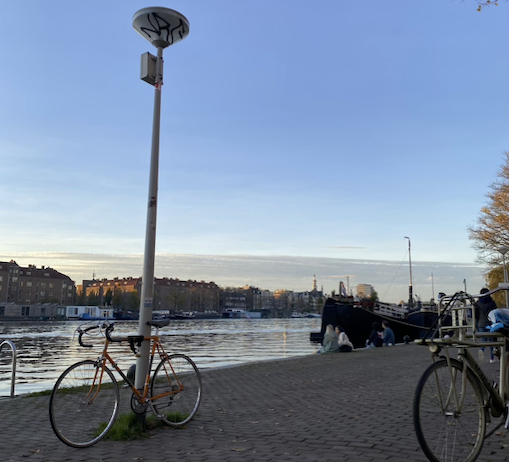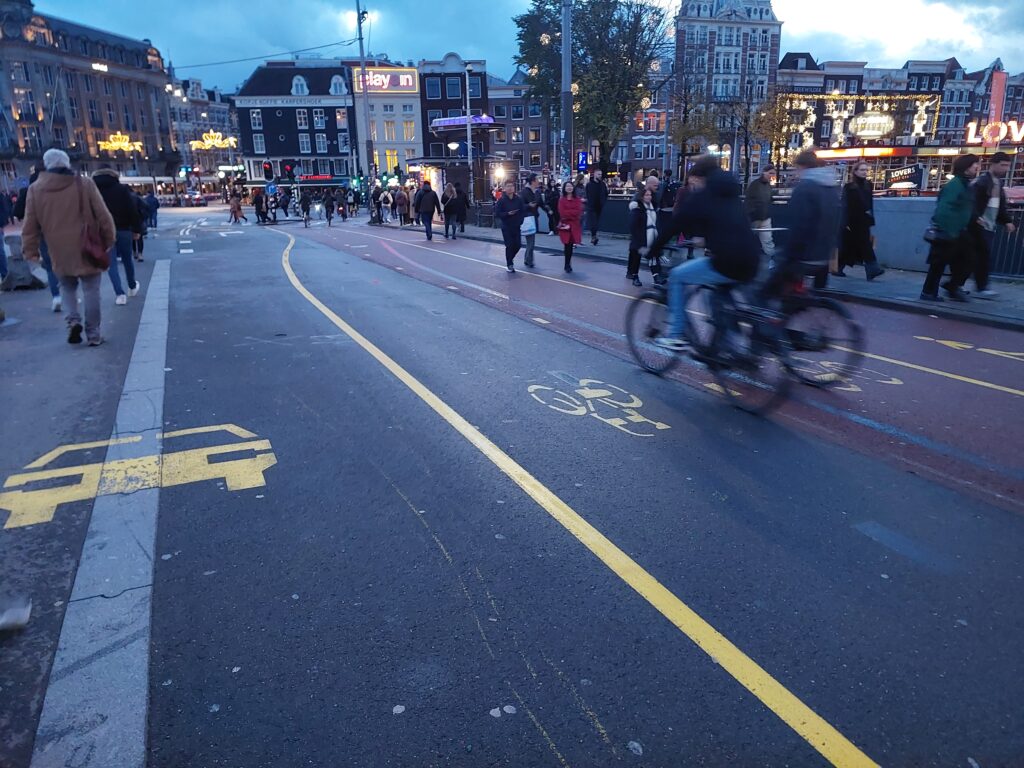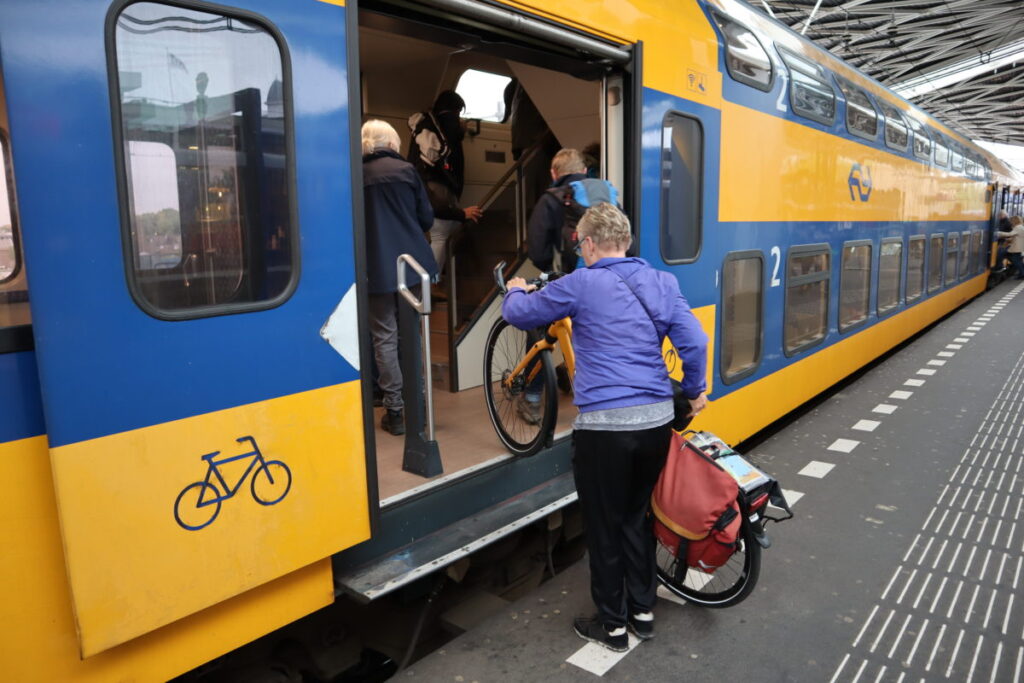By Itsi Alveano Aguerrebere
The author is a PhD candidate in Child Public Policies at Universidad Michoacana de San Nicolás de Hidalgo and specializes in road safety for children. She advocates for the rights of children to access cities and for the infrastructure that make this possible.
The population of my city, Morelia, has around 1 million inhabitants in the metropolitan area. Children represent about 35% of the population (INEGI, 2021). The average distance that people travel is around 5 km, but many don’t realize that the distances are easily covered by bike. They could leave their car at home and bike to work, groceries, school, and so forth. Only 30% of the population uses the car to commute on a daily basis, but it seems as if it were more than 80% because of the traffic, pollution, accidents, and congestion.
There are no cycle lanes on the routes I use to go to class, to work, or to drop my kids in school, but that doesn’t stop me from commuting by bike. I really enjoy bicycling because it is the cheapest, fastest, easiest, and healthiest way to move around in my city. However, it is not the safest way for children to commute because of the high probability of being hit by a car. In the last 10 years 494 children have died in road accidents in Morelia (Lopez, 2021).
Although it (the bicycle) is a simple tool, it is both the cause and effect of numerous, complex social and technical phenomena.
Marco te Brömmelstroet
Dutch people, including children and sometimes even toddlers, cycle because the infrastructure allows them to do so safely. The average bicycle ride in the Netherlands is 1000 km each year, although adolescents’ average bicycle travel is twice that distance (Glasser). Denmark is fully covered by a network of bike paths and bike lanes that are complete, coherent, connected, and comfortable (Pucher). They understand that the bicycle is not just a healthy and environmentally friendly way to get around. It is also cheaper and easier than other modes. However, it has not always been like that. Cars were once the dominant mode, but then, “The slaughter of kids brought people on the streets to protest” (Wagenbuur).
Sometimes, special efforts must be made to leave behind an adult-centric viewpoint and think from a child’s perspective or, at least, from the caregiver’s perspective. By a child’s perspective, I mean the recognized capability of children– as subjects entitled to rights– to express their opinions and experiences in their own words. “I was a young mother living in Amsterdam and I witnessed several traffic accidents in my neighborhood where children got hurt,” Maartje van Putten recalls in The Guardian article, “How Amsterdam became the bicycle capital of the world” (Zee, Renate van der). The streets needed to be made safe for children, preferably with their input: “Children could and should participate whenever urban decisions are made” (Tonucci).

Marco Lior Steinberg said “Don’t blame having a child for the need to buy a car. Blame your city leaders for making it impossible to cycle safely with children” (te Brömmelstroet). My city leaders, as well as those of most cities in México, do not care how people move. All they care about is moving cars– proof of this is the three car bridges the city is building– because they think that by adding more car lanes will solve the problem of congestion (Resillas, 2021). In my city, there is no strong and determined public policy of sustainable mobility. They haven’t embraced Vision Zero policies. There have been some painted bike lanes– shared with motorized traffic– but not enough protected bike lanes to assure safety and encourage children to use the bicycle to commute.
Another issue is road safety. Many bicyclists sometimes break road laws so that they feel safer (Marshall, W. E). Of course, children’s lives should be considered sacred. Yet in most of México’s cities, child deaths caused by traffic accidents are just seen as a normal externality of modernity and urban development. Children have to literally run for their lives so that they are not killed by speeding motorized vehicles (La voz de michoacán, dic 2020) . When cycling with my boys on a road where there is no cycle lane or cycle path and cars are flying by at over 40km/hr, we would rather use the sidewalk so that our lives are not threatened.
To reach a critical mass with more adults and children riding their bicycles to commute, policymakers from cities will need to encourage everyday cycling by involving children in decision making and making it safer for children to cycle. We must understand the global history of the vibrant, diverse, and daily practice of cycling and we must comprehend children’s perspectives in mobility. This will encourage the construction of protected bike lanes and thereby increase the volume of children biking.
Only when listening to cyclists and analyzing their behavior can policymakers, urban developers and urban planners improve the quality of life of everyone (Harms). It is necessary to actively promote children’s participation and interaction in public space to improve their wellbeing (Tonucci). While children can cycle with motor vehicles in shared space on quiet streets with low speeds and volumes, dedicated and protected cycle tracks are necessary for them to navigate larger streets and intersections (NACTO).

All images are by the author.
Sources:
- Glaser, M., U. (2020). A Historical Perspective – Is cycling in the Dutch genes Unraveling the Cycling City (The University of Amsterdam- Urban Cycling Institute), video.
- Global Designing cities initiative (2020). Designing streets for kids. National Association of City Transportation Officials. Island Press.
- Harms, L., Bertolini, L., & te Brömmelstroet, M. (2014). Spatial and social variations in cycling patterns in a mature cycling country exploring differences and trends. Journal of Transport and Health, 1(4), 232–242.
- Instituto Nacional de Estadística y Geografía (INEGI) (2021, 30 de marzo), Censo de población y vivienda 2020. Tabulados del estado de Michoacán, [Archivo de Excel]
- La Voz de Michoacán (dic 2020) Niño atropellado en periférico Norte.
- Lopez, Rafael (2021). En México, cada día mueren atropellados tres niños
- Marshall, W. E., Piatkowski, D., & Johnson, A. (2017). Scofflaw bicycling: Illegal but rational. Journal of Transport and Land Use, 10(1), 805–836.
- Oldenziel, R., & de la Bruhèze, A. A. (2011). Contested Spaces: Bicycle Lanes in Urban Europe, 1900–1995. Transfers, 1(2), 29–49.
- Pucher, J., & Buehler, R. (2008). Making cycling irresistible: Lessons from the Netherlands, Denmark and Germany. Transport Reviews, 28(4), 495–528.
- Resillas, Andrés (2021) FIN A LOS CONGESTIONAMIENTOS: AVANZA CONSTRUCCIÓN DE DISTRIBUIDOR VIAL EN SALIDA A MIL CUMBRES
- Te Brömmelstroet (b) (2020). Introduction by Marco te Brömmelstroet Unraveling the Cycling City (The University of Amsterdam – Urban Cycling Institute), video.
- Te Brömmelstroet (c) (2020) (Twitter cuote on august 27 2020)
- Tonucci, F. (b) (1991). Progetto Internazionale “La citta di bambini”.
- Tonucci, F. (2020). Restituir la ciudad a las niñas y niños Foro Internacional de Intervenciones Urbanas #5 (Ocupa tu calle, Lima cómo vamos), video.
- Waagenbuur, Mark (2012). How the Dutch Got Their Cycle Paths (BicycleDutch), video.
- Zee, Renate van der (2015). “How Amsterdam Became the Bicycle Capital of the World.” The Guardian.



